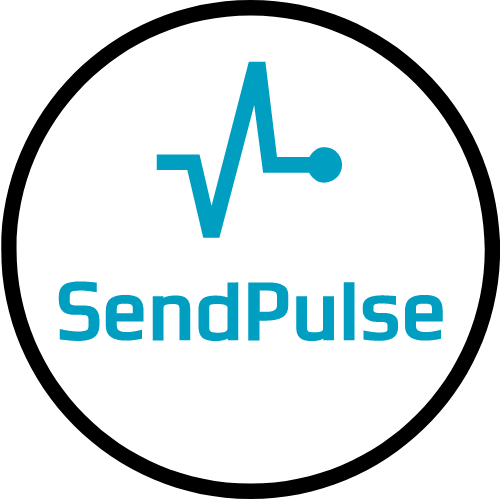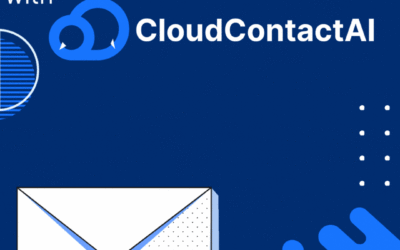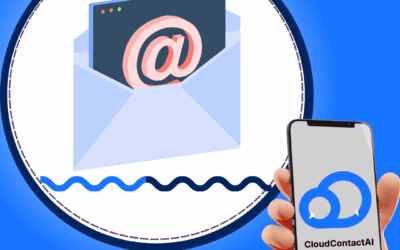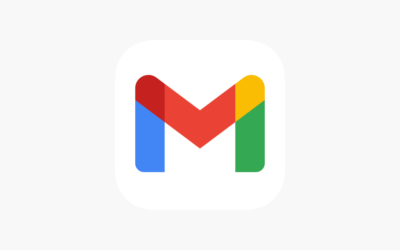What is SendGrid?
Twilio’s Sendgrid is a cloud-based email service that allows businesses to manage all email communications with ease. Users can send email through either an API (Application Programming Interface) or a web interface. With the API, developers can add SendGrid to their own apps so that they can send emails directly from their apps. The web interface, on the other hand, lets people who aren’t tech-savvy send email through a web-based interface.
SendGrid’s ability to send and receive email at scale is one of its standout benefits. This means that it can easily handle a lot of email traffic. This is important for businesses that need to send a lot of emails, like newsletters, automated email campaigns, or transactional emails.
One more thing worth mentioning is its email tracking and reporting capabilities. The service provides detailed analytics and reporting, so users can see how their email campaigns are performing. This includes information such as open rates, click-through rates, and bounce rates, which can help businesses improve the effectiveness of their email campaigns.
Pros and Cons of SendGrid
Pros:
- It’s fairly easy to use and works with many languages and platforms.
- Gives detailed analytics and reports on how well emails are delivered and how many people open them.
- Offers a wide range of email templates and design tools to help you make emails that look professional.
- Has a powerful API that makes it easy to customize and automate email campaigns.
Features like A/B testing, personalization, and segmentation, which are more advanced, are included. - Has a wide range of integrations with third-party apps.
- Offers a free plan for small businesses and a pricing structure that is flexible for larger businesses.
Cons:
- Reports of deliverability issues.
- Downtime or technical issues happen on occasion
- Customer service has been reviewed as unhelpful.
- The platform can be complex and difficult to learn for users without technical expertise.
- Pricing can be steep
- Slow to load at times.
- Updates and new features are rare.
Here are Our Top Alternatives to Sengrid

Sendinblue
Sendinblue is an all-in-one marketing and customer relationship management platform made to help businesses of all sizes succeed in their digital marketing efforts. It has a full set of tools, such as email marketing, SMS marketing, automated campaigns, and marketing automation. Businesses can easily create, manage, and track campaigns with Sendinblue. They can also divide audiences and look at results to get the most out of each campaign. Sendinblue also makes it easy for businesses to set up different customer journeys and automate communication with customers for the most efficiency.
Pros
• Easy to use and understand.
• Multitude of features
• Automation capabilities
• Reasonable pricing
• Excellent customer service
Cons:
• Limited customization
• Mediocre analytics tools
• Minimal mobile support
• Features geared more toward novice users
• Limited number of templates

Mailchimp
Mailchimp is an email marketing platform that allows users to quickly and easily create outbound email marketing campaigns. It’s designed to make it easy for businesses of all sizes to connect with their customers and subscribers through email and track their progress. With Mailchimp, users can create aesthetically pleasing, professional-looking emails using a variety of customizable templates, or they can design their own emails from scratch using the platform’s drag-and-drop email builder.
In addition to its email marketing capabilities, Mailchimp also offers a range of other features that are designed to help businesses grow their online presence. For example, users can use Mailchimp’s easy-to-understand analytics tools to track the performance of their campaigns, segment their email lists to target particular groups of subscribers. It also allows users to set up automated email campaigns that are triggered by specific actions or events such as a previous email being opened or a link being clicked. Overall, Mailchimp is a simple to use marketing tool that allows businesses to easily connect with their customers and grow their business, all in one place.
Pros:
• Easy to use: MailChimp’s user-friendly interface makes it easy for people to find their way around and make email campaigns that look professional, even if they don’t know much about design.
• List segmentation: MailChimp lets users divide their email lists into sections so they can target specific groups of subscribers. This can help make campaigns more effective.
• Affordable: MailChimp offers a free plan for small businesses and a range of pricing options for larger businesses, making it an affordable option for businesses of all sizes.
Cons:
• Large number of templates that can be changed, but some users may find that the design options are limited.
• Automation features limited compared to other platforms.
• Includes options for A/B testing, but they aren’t as many as they are on other platforms.
• The free plan has limited customer service, but the paid plans have a higher level of customer service.

Mailgun
Mailgun is a cloud-based email automation service that helps businesses to send, receive and track emails effectively. It provides a platform for sending transactional and marketing emails at scale, with features like multi-domain management, real-time analytics, and APIs for integrating with applications. With Mailgun, developers can send emails programmatically, manage email lists, and process incoming email. Mailgun also offers powerful deliverability tools, including DNS management, whitelisting, and sender authentication, to ensure that emails reach the inbox. Additionally, Mailgun provides a comprehensive reporting system, which enables businesses to track the success of their email campaigns and identify areas for improvement. This makes Mailgun a popular choice for businesses looking to improve the reliability and performance of their email infrastructure.
Pros:
• Scalable: Mailgun is designed to handle large volumes of emails, making it a suitable solution for businesses of all sizes.
• APIs and Integrations: Mailgun provides APIs for integrating with a variety of applications, making it easy for developers to send emails programmatically.
• Advanced Deliverability Features: Mailgun offers a range of tools to help improve email deliverability, such as sender authentication, whitelisting, and DNS management.
• Real-Time Analytics: Mailgun provides detailed analytics on email opens, clicks, and bounces, allowing businesses to track the success of their email campaigns.
• Multi-Domain Management: Mailgun enables businesses to manage multiple domains from a single platform, making it easy to handle all aspects of their email infrastructure.
• Comprehensive Reporting: Mailgun provides comprehensive reporting and tracking capabilities, enabling businesses to identify areas for improvement and optimize their email campaigns.
Cons:
• Cost: Mailgun can be more expensive than other email services, especially for businesses sending high volumes of emails.
• Limited Customization: Although too many customization options can be overwhelming, Mailgun could use a few more in our opinion.
• Support: Some users have reported a limited amount of support while using this product.
• User Interface: Those without a technical background might find this interface to be challenging.
• Email Sending Limits: Mailgun has strict sending limits, which can be an issue depending on the volume of emails a user wishes to send.

Amazon Simple Email Service (SES)
Amazon Simple Email Service (SES) is an email–sending service designed to help businesses send emails at scale. It allows users to send bulk emails and transactional emails quickly, securely, and at a low cost. It is integrated with other Amazon services such as Amazon CloudWatch, Amazon CloudFront, and Amazon S3. SES provides features such as email address verification, bounce and complaint handling, and IP address reputation monitoring. It also includes analytics and reporting tools to help users understand their email activities and monitor their email deliverability. SES also includes DomainKeys Identified Mail (DKIM) signing, which helps to authenticate emails sent from an approved domain, and Simple Mail Transfer Protocol (SMTP) integration for sending and receiving emails. With SES, users can send emails to customers with confidence in the security and reliability of their emails.
Pros:
• Scalability: Amazon SES can easily handle large email sending volumes, making it ideal for businesses with high email sending demands.
• Reliability: Amazon SES is built on Amazon’s highly reliable infrastructure, ensuring high email delivery success rates.
• Cost-effective: Compared to traditional email service providers, Amazon SES offers a lower cost-per-email, making it a more affordable option for businesses.
• Integration with other Amazon services: Amazon SES can be easily integrated with other Amazon Web Services (AWS) such as S3, EC2, and Lambda, allowing for a seamless email sending experience. This is arguably the biggest pro of using SES.
• Advanced reporting and tracking: Amazon SES provides detailed reports and tracking information, allowing businesses to track the success of their email campaigns.
Cons:
• Complicated setup: The initial setup of Amazon SES can be complex and time-consuming, especially for non-technical users.
• Limitations on email content: Amazon SES has strict guidelines on the type of content that can be sent, which can limit the ability to send certain types of emails.
• Technical expertise required: To utilize Amazon SES to its fullest extent, a certain level of technical expertise is required, which can be an issue for those without a technical background.
• Limited customer support: Unlike other email service providers, Amazon SES does not offer live customer support, which can make it a hassle to get your questions answered.

SendPulse
SendPulse is a multi-channel marketing platform that allows businesses to engage with their audience through various channels including email, SMS, web push notifications, and chatbots. The platform offers a range of features, including email design and automation, SMS campaigns, and real-time web push notifications. SendPulse’s intuitive drag-and-drop builder makes it easy to create and send beautiful emails, while its automation tools allow businesses to set up personalized campaigns based on subscriber behavior. The platform also offers detailed reporting and analytics, enabling businesses to track their campaigns’ success and make informed decisions. With its emphasis on providing a seamless omnichannel experience, SendPulse is a powerful tool for businesses looking to boost customer engagement and drive conversions.
Pros:
• Omnichannel approach: SendPulse offers a range of communication channels, including email, SMS, web push notifications, and chatbots, allowing businesses to engage with their audience through multiple channels.
• Intuitive builder: SendPulse’s drag-and-drop builder makes it easy to create beautiful and effective emails, even for users with limited design experience.
Automation tools: The platform’s automation tools allow businesses to set up personalized campaigns based on subscriber behavior, increasing engagement and conversions.
• Affordable pricing: SendPulse offers competitive pricing compared to other marketing automation platforms, making it a cost-effective solution for businesses of all sizes.
• Quality analytics: SendPulse provides detailed reporting and analytics, enabling businesses to track their campaigns’ success and make informed decisions.
Cons:
• Limited integrations: Compared to other marketing automation platforms, SendPulse has limited integrations with other tools, which can limit its usefulness for businesses with complex requirements.
• User interface could be improved: Some users may find the SendPulse interface to be cluttered or confusing, which can make it challenging to navigate the platform effectively.
• Limited support: Some users have reported limited availability of customer support, which can be a barrier for businesses requiring immediate assistance.
• Limited SMS capabilities: The platform’s SMS capabilities are more limited compared to other platforms, like CloudContactAI which can be a disadvantage for businesses that heavily rely on SMS for marketing.
• Deliverablility Reports: Some users have reported deliverability issues with SendPulse.
Concluding Thoughts
There are several reasons why someone might choose to use a SendGrid alternative. Firstly, cost could be a major factor, as some alternative services may offer more cost-effective pricing plans that better align with the needs and budget of the user. Secondly, features and functionality could play a role, as some alternatives may offer unique capabilities that are not available on SendGrid or that better suit the user’s specific needs. The reliability and delivery of the platform could also be a consideration, as some alternatives may have better delivery rates and less downtime than SendGrid. Finally, user experience and customer support may also play a role in the decision-making process, as some alternatives may have more user-friendly interfaces and more responsive customer support teams. Ultimately, the choice of a SendGrid alternative will depend on the individual needs and priorities of the user.
CloudContactAI’s intuitive platform makes it easy to send reminders, confirmations, notifications, and other messages at scale. Save time, money, and resources with CloudContactAI!
Sign up for our premium SMS marketing service today!




